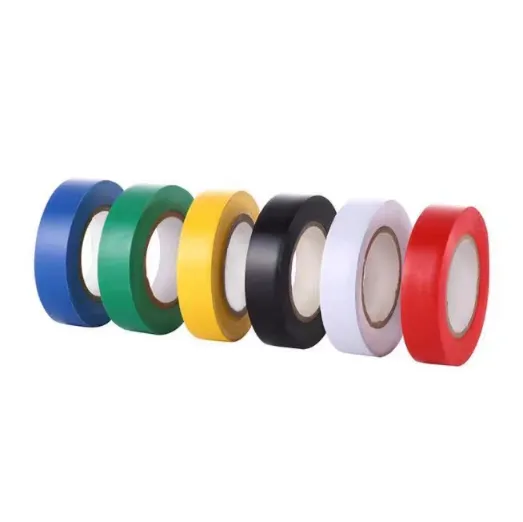
Introduction
Transformer coil insulation keeps everything safe and running smooth. Without it, shorts and leaks happen fast. Insulation tape plays a big part here, fixing layers and ends. Smart combos with other materials boost performance big time.
Understanding Transformer Coil Insulation
Importance of Proper Insulation
Good insulation in transformer coils keeps electricity where it belongs. It blocks short circuits and leaks that could fry the system. Without it, sparks fly, and equipment fails fast. Plus, solid insulation stretches the transformer’s life, cutting down on repairs. Heat buildup or moisture often cause breakdowns. Dust and vibrations add to the mess too. Catch these early, and problems stay small.
Types of Insulation Materials
Paper, films, and resins show up a lot in transformer insulation. Paper soaks up oil well in oil filled units, but it wears out in dry setups. Films like polyester handle heat better. Resins fill gaps and add strength. Each material brings something different. Paper flexes easy, films resist tears. Insulation tape works with these, holding layers tight. For example, tape over paper adds extra protection against wear. The combo matters because weak spots invite trouble.
Role of Insulation Tape in Transformer Coils
Key Functions of Insulation Tape
Insulation tape handles layer insulation and shields coil ends. It wraps wires snug, stopping shifts from vibrations. In motors or transformers, this mechanical grip counts big time. Tape also fights heat, handles high voltages, and sometimes resists flames. Think about a coil humming away; tape keeps it stable. No wonder pros rely on it for tough spots.
Material Considerations for Insulation Tape
Polyimide (PI), polyester (PET), and PVC tapes each have strengths. PI takes extreme heat, up to 200°C or more. PET balances cost and performance, common in general use. PVC shines in everyday electrical work.
Compare them: PI for high temp jobs, PET for flexibility, PVC for easy handling.
High temperature ratings, voltage resistance, and chemical stability make the difference. QKD’s PVC Electrical Insulation Tape stands out here. It uses plasticized PVC backing, with rubber adhesive. Dielectric breakdown reaches 7 KV minimum. Tested under ASTM D1000, it fits many specs. Tensile strength at 12 MPa, elongation 100%. QKD pushes these advantages for reliable coil work.
Sometimes folks overlook how tape color matters. Yellow or clear options help spot issues quick during checks. Not a big deal, but it saves time on the floor.

Combining Insulation Tape with Other Materials
Layering Strategies
Wrap multiple layers with controlled overlap for even coverage. Keep thickness uniform to dodge hot spots. Mix tape with paper or films: tape secures the stack, papers add bulk insulation. For example, polyester laminates from IPG, like 51595 at 4.5 mils total thickness, pair well with non woven for coil wrapping and anchoring.
End Insulation Techniques
Ends take the most abuse from edges and leads. Strong insulation here prevents arcs. Use tape to bind end materials tight, like combining rubber thermosetting adhesives for solvent resistance. This setup locks in protection where it counts.
Ensuring Long Term Performance
Fight aging with proper storage: 23±2°C and 65±5% RH, as noted in IE8#T specs, for up to 12 months shelf life. Test for quality against standards like ASTM D1000. Environment plays a role; humidity sneaks in and ruins bonds if ignored.
Practical Tips for Using Insulation Tape
How to Choose Suitable Model and Thickness
Pick based on specs: For PVC like IE8#T, total thickness 0.180±0.018 mm, tensile strength 12↑ Mpa, elongation 100↑ %, dielectric 7↑ KV. PET options from IPG, such as 51587 at 2.2 mils total, adhesion 50 oz/in, suit chemical resistance. Match to voltage and temp needs.
Safe Wrapping Techniques
Start clean and dry. Wrap with half overlap for no gaps. Tension just right – too tight cracks, too loose slips. Tools help, but hand feel catches issues early.
Boosting Production Efficiency and Insulation Reliability
Automate where possible for consistent wraps. Regular checks spot weak spots. Combine tapes like IPG’s glass cloth for extra strength in tough coils. Efficiency jumps when materials sync up well.
Conclusion
Insulation tape anchors the system in transformer coils, teaming with other materials for top safety and life. QKD leads with advanced solutions that fit real world demands. Pros in industry should grab high performance tapes to nail reliability every time.
FAQ
Q1: What makes PI tape better for hot environments?
PI handles temps up to 204°C or more, with strong dielectric like in FM-28 at 2.5 mils thick and 25 oz/in adhesion.
Q2: How does PET compare to PVC in cost?
PET offers better conformability for complex wraps, while PVC like IE8#T shines in basic electrical with lower price tags.
Q3: Can tapes resist solvents long term?
Yes, thermosetting rubbers in IPG products, like 51578, hold up well against chemicals when cured right.
Q4: What’s the dielectric strength needed for coils?
Aim for at least 5,000 volts, as in many polyester films, but check specs like 7 KV in PVC for safety margins.
Q5: How to store insulation tapes?
Keep at 23°C and 65% RH, per guidelines, to maintain adhesion for 12 months.
